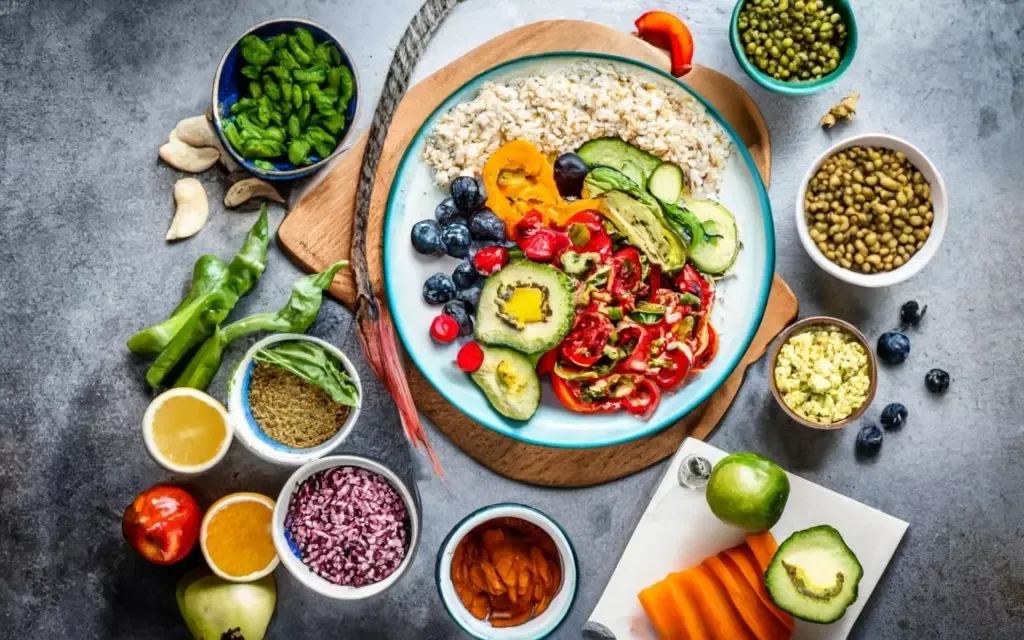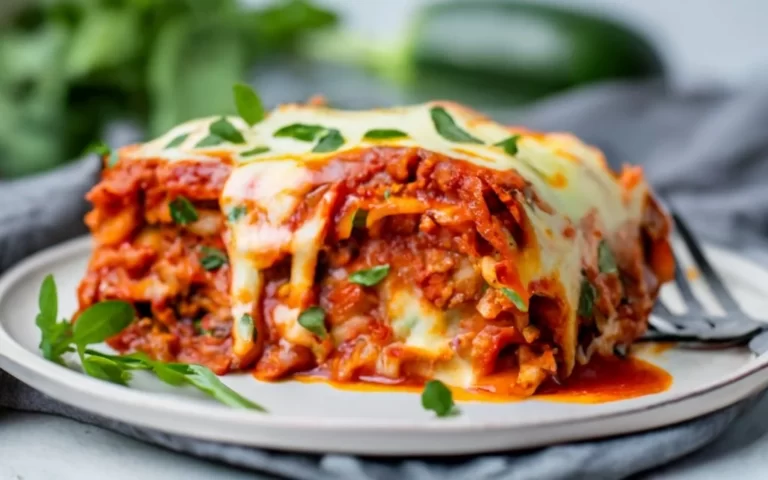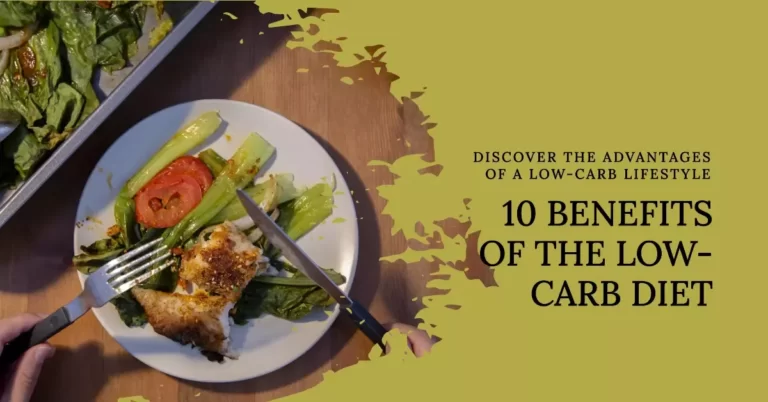Low-carb diets have been popular and commonly used for weight loss for many years. The idea behind low-carb diets is to reduce how many carbohydrates you eat so that your body begins burning stored fat for energy instead. By significantly cutting back on carbs and emphasizing lean proteins, healthy fats, and vegetables, low-carb diets can help promote fat burning, control hunger and cravings, and improve health markers like blood pressure and cholesterol.
There are several different types of low-carb diets to choose from, ranging from very strict low carb ketogenic diets with 50 grams of carbs or less per day, to more relaxed and sustainable low-carb diets that allow 100-150 grams of carbs from nutrient-dense sources.
In this article, we will overview the most popular and effective low-carb diets for weight loss, discuss the pros and cons of low-carb eating, provide tips for success, and sample meal plans to help you choose the right low-carb diet for your needs and preferences.
Ketogenic diet
One of the most popular low-carb diets is the ketogenic or “keto” diet. This diet aims to get your body into a metabolic state called ketosis, where your body starts burning fat for energy instead of carbohydrates. It does this by restricting carbohydrate intake to typically 20-50 grams of net carbs per day (net carbs are total carbs minus fiber content). Such a low level of carbs is quite restrictive but forces the body to turn to fat stores for fuel.
Research shows that the keto diet can be very effective for weight loss and also for improving biomarkers for diabetes, heart disease, and other conditions. However, the highly restrictive nature makes it challenging to stick to long term. It takes commitment, planning, and tracking to stay in ketosis. Some people experience side effects like headache, fatigue, constipation, and nutrient deficiencies on keto as well.
Atkins diet
The Atkins diet is another popular commercial low-carb diet that focuses on restricting carbs to 20-25 grams per day in the induction phase. This phase is very low carb but includes foods like meat, eggs, cheese, low carb vegetables, and fats like butter and oils. As you move through the phases, you slowly increase your carb intake until you identify your personal carb tolerance for maintaining weight loss.
Like keto, Atkins emphasizes protein foods and healthy fats while keeping carbs low. Research indicates Atkins can be effective for weight loss and lowering heart disease risk factors. However, the induction phase is very restrictive and difficult for many people to adhere to. Atkins requires tracking carbs and gradually increasing until you find your optimal carb intake.
Paleo diet
The paleo diet aims to emulate what cavemen would have eaten in the Paleolithic era – things like lean protein, fruits, vegetables, nuts and seeds. It avoids modern processed foods, added sugars, grains, legumes, dairy, and certain oils. The diet focuses on meat, fish, eggs, and lots of produce.
Research shows paleo can help with weight loss and reduce risk factors for heart disease and diabetes. Removing processed foods and added sugars can have a beneficial effect. However, the diet completely eliminates whole grains, legumes, and dairy, which may lead to nutrient deficiencies without careful planning. The restrictive nature makes long term adherence difficult.
Low-carb Mediterranean diet
This diet combines a low-carb approach with the traditional heart-healthy Mediterranean diet. It emphasizes foods like olive oil, fatty fish, plenty of non-starchy vegetables, some dairy foods like cheese and yogurt, and moderate amounts of nuts, seeds, and berries. It limits refined grains, added sugars, and highly processed foods.
The low-carb Mediterranean diet provides balanced nutrition focused on monounsaturated fats, which are beneficial for cardiovascular health. Removing high glycemic index carbs can help stabilize blood sugar. This can be more sustainable than very low carb diets while still providing weight loss benefits.
Dukan low-carb diet
The Dukan low-carb diet is a very low carb, high protein diet that progresses through 4 phases. Phase 1 is the most restrictive attack phase allowing only unlimited lean protein plus 1.5 tablespoons of oat bran per day. Phase 2 brings in non-starchy veggies for fiber on top of the protein focus. Phase 3 starts adding limited amounts of carbs and fats back. Phase 4 is meant for weight stabilization.
Research shows the Dukan diet can produce impressive weight loss results. However, the first 2 phases are extremely restrictive and limit most foods besides protein. These phases can be hard to sustain long-term. There are also concerns about potential kidney damage from high protein intake.
South Beach low-carb diets
The South Beach diet starts with a 14-day intensive low glycemic phase. This kickstarts weight loss by restricting carbs to low glycemic options like vegetables, nuts, berries. Dieters focus on lean protein, healthy fats, and low glycemic carbs to balance blood sugar. After two weeks, it transitions to a more sustainable low glycemic eating plan.
Research indicates the South Beach diet reduces cardiovascular disease risk factors due to its focus on heart-healthy fats and low glycemic carbs that won’t spike blood sugar. The restrictive two-week induction phase helps reduce cravings and kickstart weight loss for many dieters.
Low-carb intermittent fasting
Intermittent fasting combined with a low-carb diet may enhance weight loss compared to each intervention alone. Common approaches are alternate day fasting, the 5:2 diet with two fast days per week, or daily 16-8 hour fasts (like skipping breakfast and nighttime eating).
Animal studies indicate coupling carb restriction with fasting could burn fat more effectively. However, human studies are still limited. If trying this combination, focus on nutrient-dense foods during feeding periods and adequate calories for your needs. Drink plenty of water and watch for signs of headaches, fatigue or nausea.
Tips for success on low-carb diet
Here are some tips to improve your chances of success on a low-carb diet:
- Drink plenty of water to avoid dehydration.
- Add extra salt to your foods to replace what is lost from carb restriction.
- Incorporate exercise, especially weight lifting to prevent muscle loss.
- Plan out low carb meals and snacks to ensure you stay on track.
- Track your carb intake at least initially to stay within carb limits.
- Eat plenty of low carb veggies for fiber, nutrients, and bulk.
- Manage cravings with fat, protein, distraction, and waiting them out.
- Be patient – it can take a few weeks for your body to adapt to burning fat.
Pros and cons of low-carb diets
Low-carb diets have several proposed benefits but also come with potential downsides to be aware of.
Pros:
- Effective for fast weight loss, especially initially.
- Can suppress appetite and reduce cravings.
- May improve blood sugar control and other diabetes markers.
- Can lower blood pressure and improve cholesterol.
- Reduces inflammation markers associated with disease.
Cons:
- Low energy and fatigue, especially early on.
- Constipation due to lower fiber carbs.
- Nutrient deficiencies if food choices are poor.
- Headaches and muscle cramps as the body adapts.
- Difficulty sticking to very low carb long term.
Sustainable low-carb eating
To make low-carb diets more sustainable for the long haul:
- Emphasize nutritious, minimally processed low carb foods.
- Include plenty of low carb vegetables and some fruits.
- Incorporate occasional higher carb days if following strict keto.
- Engage in regular physical activity you enjoy.
- Eat enough calories to support your needs.
- Stay hydrated and balance electrolytes.
- Build in flexibility and forgiveness in your approach.
Consider working with a nutrition professional or your doctor to craft a low-carb diet tailored for your health status, preferences and lifestyle.
Sample low-carb meal plan
Here is a sample one day low-carb meal plan:
Breakfast: Eggs fried in olive oil with sauteed spinach, half an avocado, and raspberries.
Lunch: Massaged kale salad topped with grilled chicken breast, feta cheese, walnuts, and balsamic vinaigrette.
Dinner: Meatballs made with ground turkey and Parmesan cheese served over zucchini noodles with marinara sauce and sauteed broccoli.
Snacks: Mozzarella cheese sticks, celery with nut butter, olives, cucumber slices with hummus.
Exercising on a low-carb diet
Regular exercise provides benefits on a low-carb diet. It can help burn additional fat, build and maintain muscle mass, support cardiovascular health, and manage weight. Here are some tips:
- Focus on a mix of aerobic exercise like walking to maximize fat burning.
- Incorporate resistance training to maintain muscle.
- Take it slow at first while your body adapts to low carb.
- Consume electrolytes before/during exercise to reduce cramps.
- Have a snack if exercising longer than 1 hour.
- Time meals and carbs around your workout schedule.
Conclusion
In conclusion, low-carb diets like keto, Atkins, and paleo have research supporting their effectiveness for weight loss, appetite regulation, and other health markers. However, very low carb diets should be approached cautiously and may need modifications for sustainability.
Focus on low-carb plans that provide balanced nutrition without too many restrictions. Be sure to include fiber-rich vegetables and some fruits. Consider your health status, lifestyle, and preferences to find the right moderate low-carb diet for your individual needs. Work with your healthcare team to craft a sustainable low-carb eating plan.
FAQs
Q: How many carbs per day on a low-carb diet?
A: For ketogenic diets, 20-50 grams of net carbs per day. For a moderate low-carb diet, typically 100-150 grams of carbs per day.
Q: What are good low-carb snack foods?
A: Good low-carb snack options include nuts and seeds, cheese, nut butter with celery or cucumber slices, hard-boiled eggs, jerky or deli meats, avocado, olives, peppers,pickles, and berries.
Q: Can low-carb help reverse diabetes?
A: There is evidence that following a very low-carb ketogenic diet can lower blood sugar levels, reduce HbA1c, and decrease diabetes medication requirements, effectively reversing diabetes symptoms.
Q: Is low-carb safe long term?
A: Strict low-carb diets are likely hard to sustain forever. But incorporating low-glycemic carb sources like vegetables, fruits, legumes, and whole grains can make low-carb eating safe and healthy long term.
Q: How fast can you lose weight on keto?
A: Many people lose 5-10 lbs in the first 1-2 weeks on keto as glycogen stores release water. After that, aim for 1-2 lbs of fat loss per week. Several factors affect weight loss speed.





